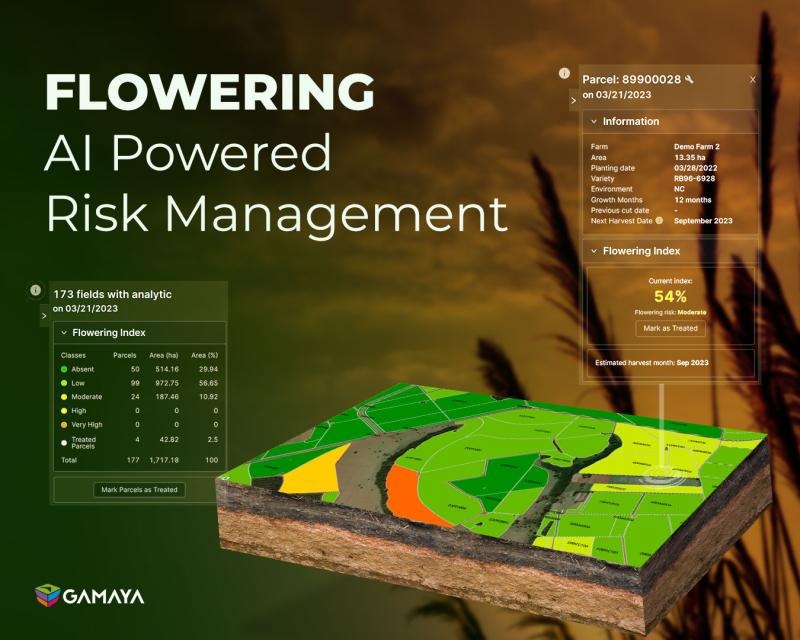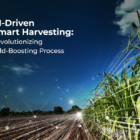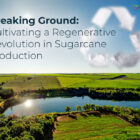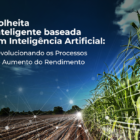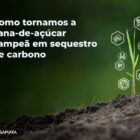Crop mapping supported by artificial intelligence allows early identification of problems, savings on product purchases and more efficient application
By Leandro Becker, journalist specialized in agribusiness
The final stretch of the harvest is always a moment of concern and challenge in the management of sugarcane plants, especially in the midst of risks such as flowering and isoporization, which can cause the loss of up to 30% of the cane field. The use of technology based on artificial intelligence, however, offers a “soothing” whose recipe mixes the prevention of a more accurate diagnosis with the optimization of management, especially in the use of inputs.
Flowering does not affect all crops uniformly, but it can generate a loss of up to 30% of the cane field. Isoporization on the other hand, has the potential to cause even greater damage, as it causes a direct loss of biomass, which impacts on the quality of the raw material and on industrial efficiency. Together, these problems bring headaches to producers and mills as they result in lighter sugarcane, with less sugar and a lot of fiber.
“If you think about an average cane field, with a yield of 74 tons per hectare, those 30% can result in a loss of 20 tons. This means a loss of BRL 3,100 per hectare, while the preventive operation costs BRL 140 per hectare. Therefore, investing in prevention and optimization is more than justified”, points out product’s developers in Gamaya Brazil, which offers agronomic intelligence solutions for sugarcane.
They emphasizes that the use of a predictive tool is important because the induction of flowering, for example, does not have any physical or visual symptoms in the plant, unless it is cut. “So, many times, when you realize the problem, it will already be impossible to solve. That’s where the technology helps, as it maps the risk based on real images captured by satellite in each area. In addition, it allows you to better scale the amount of inputs needed, ”he notes.
Another important aspect is support in the strategic planning of inputs. After all, even though the flowering control and isoporization period is between February and March, the purchase of products needs to be done in advance. In addition, she must take into account that preventive management takes place weekly and that weather issues can impact the amount of product and applications, which are made by plane.
“In this case, the system supports you with a daily update of risk areas, with real weather information and a forecast for the next few days. This is also important because, many times, the window to apply the inhibitor and ripener is short to cope with the operational needs”, pointing out that, in the case of Gamaya technology, the satellite passes every 6 days and maps the cane field even on cloudy or rainy days.
More planning, less spending
We also draw attention to the fact that, in the Center-South region, the area where inputs are applied is around 700,000 hectares a year. But estimates indicate that it could reach from 1 million to 1.2 million hectares in high and very high risk regions. “If the summer is rainier, for example, the risk increases a lot. Therefore, having this prognosis through the automated tool allows the plant manager to work with more assertive data to avoid unforeseen events and extra costs”.
It is in the face of variations like this that technology support becomes a differential. After all, in addition to constantly monitoring the crop, it helps to define the necessary amount of input, reducing expenses. “It also prevents the plant from having to work with very high inventories, even more so at the higher cost it is today. And this will also ensure that you obtain optimized productivity not only for the current cycle, but for the following years”, highlights the Gamaya manager.
This effect on subsequent seasons is not just limited to chemicals to prevent problems such as flowering and isoporization. It is also reflected in essential inputs for a healthy cane field, such as fertilizer. Bearing in mind that fertilization is carried out based on expected productivity, using technology to better measure the amount needed and the cadence throughout the harvest is a competitive differential.
“Today, the plant that does not have assertiveness at the micro level of the areas ends up applying the average. And then the tendency is to end up putting more fertilizer in a plot with lower productivity, which will not respond, and less where there is greater potential. And this will directly impact productivity, as well as costs.”
Gamaya’s differentials
Gamaya offers, through the CanaSight tool, a complete package of solutions for sugarcane, including Flowering Risk and Isoporization. The new automation system and automated intelligence mixes high precision, data science and monitoring by sugarcane specialists and offers differentials such as satellite updates, even on cloudy or rainy days, and high accuracy of ATR and TCH at an extremely affordable cost.
High assertiveness is guaranteed thanks to a bank with sugar yield data from 4 million hectares harvested in different regions of central-south Brazil in the last 10 harvests. And a differential is that the technology has its model improved weekly, as more data is included, bringing even more reliability and efficiency.
When hiring the pilot, the customer simply forwards a list of data to implement the system, including results from the previous and current harvest. Access is granted within 7 days, followed by training to use the platform, which brings together the main automation information in a simple and intuitive way, on a single screen. Gamaya also offers personalized follow-up and technical guidance for each client.
To test the tool, contact us.
